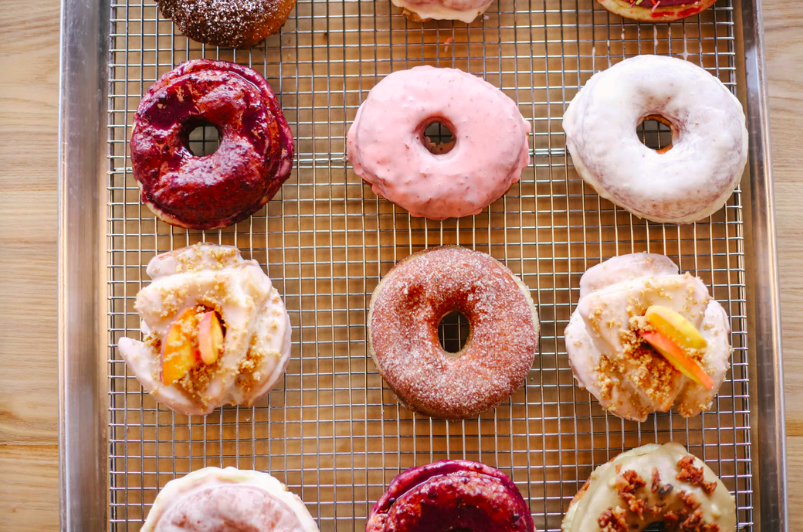Inspiration June 5, 2018
Thank god for the dough girls.


So June 1 is National Donut Day, which means free donuts from various participating locations. But what makes National Donut Day special to ENTITY? Well, it’s actually because of the awesome women behind this quirky holiday.
There’s a weird holiday arbitrarily celebrated on almost every day of the year. But National Donut Day actually has quite a noble history attached to it. This day celebrates the “dough girls” or “dough lassies”s effort during World War I. As a way to boost morale, women volunteered for the Salvation Army and hand-made doughnuts for soldiers.
These women didn’t only need to know how to make donuts, but many of them had to have impressive backgrounds as well. According to LIFE, “they are hand-picked for looks, education, personality and experience in recreational fields. They are hardy physically and have a sociable, friendly manner.” Sounds like well-rounded #womenthatdo.
However, it wasn’t until 1938 that the Chicago branch of the Salvation Army made it a national holiday. Originally it was a plan to raise funds for the organization, but the heart of it celebrated the dough girls of WWI.
Evangeline Booth, general of the Salvation Army, sent the 250 Salvation Army volunteers out into the trenches in France.
Margaret Sheldon and Helen Purviance were two of the volunteers in the Salvation Army. When they realized supplies were running low, they knew something had to be done. So with what little ingredients they had — flour, sugar, lard, baking powder, cinnamon and canned milk — they whipped up the donuts we all know and love.
They made the donuts in frying pans, but when supplies were scarce, they made use of soldier’s helmets. They also substituted wine bottles for the rolling pin. The innovation is real.
Later, Purviance took an empty evaporated milk can and an empty tube of shaving cream to the village blacksmith, asking him to make a donut cutter. Now they were able to create the ringed donut shape.
Helen Purviance stated, “somehow this would do more for those who ate the donuts than just to satisfy a physical hunger.” And she was right. The donuts brought the soldiers a sense of home. The treat not only nourished them physically, but spiritually as well.
In the beginning of their donut quest, Purviance and Sheldon could only make 150 donuts per day. But as supplies rolled in, they and other donut lassies were able to make 2,500 to 9,000 donuts per day. When women are provided with the right tools, they can do just about anything.
The dough girls of World War I served as a beacon of hope and home. By making the best of what they had, they were able to boost the morale of sunken soldiers on the battlefield.
Without Purviance and Sheldon, the pervasiveness of this common treat, the donut, may not have taken place. Now that you know the women behind the snack, grab a donut on June 1 in tribute to the dough girls.